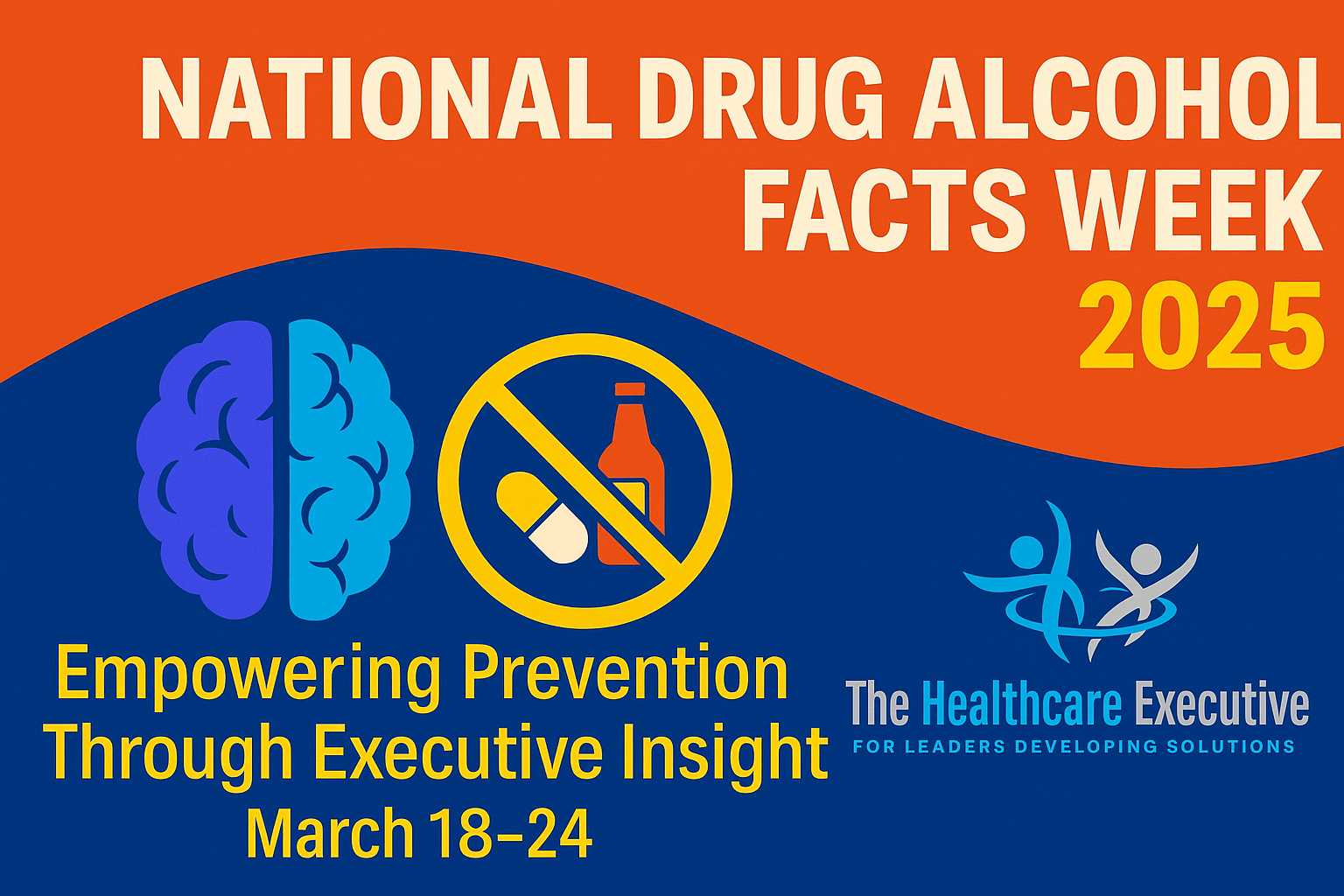National Drug and Alcohol Facts Week 2025: Empowering Hospital Leaders to Combat Youth Substance Misuse

- Posted by Greg Wahlstrom, MBA, HCM
- Posted in Health Observance Calendar
Healthcare Executives Must Lead Youth Prevention Efforts, Behavioral Health Integration, and Community Education Initiatives
Published: March 18, 2025
National Drug and Alcohol Facts Week (NDAFW), recognized annually in March, is a pivotal moment for healthcare executives to spotlight substance use prevention through community-centered leadership. Coordinated by the National Institute on Drug Abuse (NIDA), this week encourages evidence-based education that counters harmful myths about youth drug and alcohol use. In the post-pandemic era, teen mental health and substance misuse have escalated, underscoring the need for hospitals to serve as educational and clinical anchors. At Mass General for Children, hospital-based youth substance use programs now integrate behavioral health triage and peer mentorship into school partnerships. Executives can replicate this model by working with school districts, local public health agencies, and parent organizations to bring prevention to the forefront. When CEOs prioritize health literacy, adolescent engagement, and community-based interventions, they position the hospital as both a care center and a cultural leader. NDAFW reminds us that strategic influence starts well before a hospital admission.
Hospitals must go beyond clinical treatment and into proactive educational leadership to address the evolving youth substance use landscape. Healthcare executives can establish fact-based digital campaigns during NDAFW that amplify scientific truths and destigmatize behavioral health support. Institutions like Nemours Children’s Health have deployed social media micro-campaigns led by youth advisory boards to connect peers with preventive tools and helplines. CEOs can also align internal operations with prevention strategy by empowering care teams to participate in local education initiatives, offering staff incentives for community presentations, and embedding NDAFW themes into employee wellness weeks. These measures don’t just build goodwill—they improve public health literacy, reduce emergency department visits, and strengthen trust. By giving voice to prevention professionals and elevating lived experience, hospitals can rewrite the youth addiction narrative from within.
Integrating substance use screening and early intervention into routine pediatric and adolescent care is essential for sustained impact. Leading organizations like Children’s Hospital of Philadelphia have embedded screening, brief intervention, and referral to treatment (SBIRT) protocols into their ambulatory workflows. Hospital executives should champion similar protocols and fund training for primary care and emergency staff on adolescent behavioral health risk assessments. On the systems level, boards should evaluate gaps in Medicaid and CHIP behavioral health access, especially for minoritized populations. NDAFW provides a platform to announce new strategic initiatives—such as mobile behavioral health units, school-based clinics, or telehealth prevention portals—backed by clinical data and patient voice. Substance misuse is not only a community concern—it is a strategic operations concern. As such, it belongs in executive boardrooms and capital planning processes.
Workforce development also plays a crucial role in preventing and responding to youth substance use. During NDAFW, executives should assess their organization’s capacity to train, retain, and deploy behavioral health talent across pediatric and school-based programs. Leaders can explore partnerships with nursing schools, social work departments, and addiction medicine fellowships to create new career pipelines and enhance retention. Institutions like Rush University Medical Center have invested in addiction centers that double as workforce training hubs for frontline clinicians. Investing in behavioral health infrastructure—clinical, academic, and digital—is no longer optional; it is a foundational pillar of community relevance and long-term sustainability. Hospital CEOs must ensure that youth substance prevention is not a seasonal campaign but a year-round strategic imperative.
National Drug and Alcohol Facts Week 2025 is more than an awareness campaign—it’s a call for executive-level action that prioritizes truth, access, and early intervention. Whether launching a podcast series with clinicians and teens or sponsoring health literacy programs in local schools, hospital leaders have the authority and responsibility to shape youth health trajectories. The most effective prevention efforts are those that are embedded, resourced, and sustained from the C-suite outward. When hospital executives align vision with community voice, they not only reduce harm—they build trust. And in today’s healthcare environment, trust is the most valuable currency of all.
Discover More on Behavioral Health Leadership
Explore how executives are tackling youth behavioral health through data-driven strategy, school-based partnerships, and preventive workforce development.
Internal Links
- Mental Health Initiatives: C-suite Leadership in Addressing a Growing Crisis
- The 2025 Regulatory Roadmap: What CEOs Must Prepare For Now



